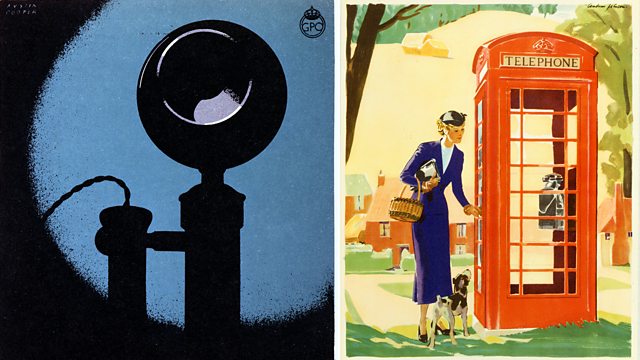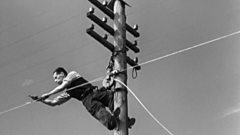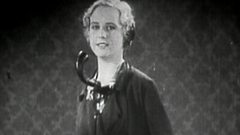
From early call boxes to the Post Office Tower, Timeshift tells the story of how Britain's phone network was built over the course of 100 years, and its impact on the public.
Timeshift tells the story of how Britain's phone network was built. Incredibly, there was once a time when phones weren't pocket-sized wireless devices but bulky objects wired into our homes and workplaces. Over the course of 100 years, engineers rolled out a communications network that joined up Britain - a web of more than 70 million miles of wire. Telephones were agents of commercial and social change, connecting businesses and creating new jobs for Victorian women. Wires changed the appearance of urban skylines and the public phone box became a ubiquitous sight.
Yet despite ongoing technical innovation, the phone service often struggled to meet demand. When the mobile phone arrived, it appeared to herald the demise of the landline. Yet ironically, now we're more connected than ever, it's not the telephone that's keeping us on the landline.
In 1877, Scottish-born inventor Alexander Graham Bell returned to Britain from America to showcase a revolutionary new electric device - the telephone. After impressing no less than Queen Victoria, Bell helped drive uptake of the telephone in Britain, tapping into the growth of a growing commercial phenomenon - the office. Soon, whole networks of telephone lines were being built, connected together by exchange switchboards. Female switchboard operators were preferred by telephone companies as they were cheaper and perceived as more polite, opening up new employment opportunities for women in late Victorian Britain.
At first only the wealthiest people had phones in their homes, but the public call box soon emerged, although when the GPO - the General Post Office - took over the private networks, it initially struggled to find an acceptable design for its box and met some resistance to its now iconic bright red colour.
The introduction of direct dial telephones and automatic exchanges, as well as services like the 999 emergency number and the speaking clock, helped drive private uptake of phones in the 1930s. However, with the onset of World War Two, military concerns took priority. Gene Toms, a switchboard operator, recalls her time during the war, trying to work while wearing a helmet during air raids, dealing with self-important officers and doing her best to assist servicemen phoning home.
A renewed drive to restore, modernise and expand the network after the war kept a legion of engineers busy. Former GPO engineers Jim
Coombe, Bryan Eagan and Dez Flahey share their memories of dubious safety practices and difficult customers. Despite the expansion, the network still had limited capacity relative to demand, and one cheaper solution was the "party line", shared with another household, although it created problems of privacy.
The introduction of STD - subscriber trunk dialling - in the late 1950s enabled callers to make long distance calls without the help of an operator. But STD, like the network itself, was taking a long time to roll out; and despite the introduction of stylish coloured telephones and the Trimphone in the 1960s to tempt customers, the service acquired a bad reputation among many users. Even an episode of the children's series Trumpton reflected the general frustration. Archive footage shows the then postmaster general, Anthony Wedgwood Benn, being grilled by an interviewer about the shortcomings of the phone service.
But there was an exciting new symbol of the future under construction - the Post Office Tower, part of a network of towers designed to expand the capacity of the network using a wireless, microwave system. By the 1970s telephone supply was catching up with demand. People were increasingly moving home around the country, relocating for work, and young families expected to have a phone as a standard mod con. An advertising campaign featuring a talking cartoon bird - Buzby - encouraged customers to make more calls. What was once a service had become a thriving business, and British Telecommunications was privatised in 1984.
The arrival of the mobile phone soon threatened to supersede the landline - but the internet, a technology that the founding fathers of telephony could never have dreamed of, has given the landline a new lease of life.
Last on
More episodes
Next
Coming soon
Clips
-
![]()
Pole to pole
Duration: 01:28
-
![]()
Life on the switchboard
Duration: 01:26
Music Played
Timings (where shown) are from the start of the programme in hours and minutes
-
![]() 00:17
00:17Django Reinhardt
All of Me
-
![]() 00:18
00:18Django Reinhardt
All Of Me
-
![]() 00:26
00:26Daniel Teper
Odd Day Waltz
Credits
| Role | Contributor |
|---|---|
| Narrator | Victoria Coren Mitchell |
| Producer | Andy Hall |
| Executive Producer | John Das |



